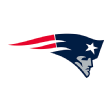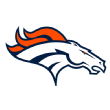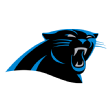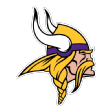Ranking the most unlikely Super Bowl teams ever, and where the 2019 49ers land

It's fair to say that just about nobody expected the San Francisco 49ers to make Super Bowl LIV. There were certainly reasons to think they would be better -- I named them as the most likely team to improve, and I even predicted in April that they would make the playoffs. Making a leap from 4-12 all the way to the Super Bowl, though? Only one team in league history had done that across more than 50 years of Super Bowls.
Now two teams have done it, as the 49ers joined another recent Super Bowl attendee in going from 4-12 to the biggest game in football. They are one of just 10 teams to improve by nine or more wins in a single season (after prorating schedules to 16 games) in the Super Bowl era. What coach Kyle Shanahan and the rest of this organization have pulled off in 2019 is a once-in-a-generation sort of improvement.
Where do the Niners stand in terms of the most unexpected Super Bowl attendees in history, though, when we use more advanced metrics? And most importantly, when we have seen teams come out of nowhere and earn their way into the Super Bowl, have they been overawed on the biggest stage of their lives, or have they continued to beat the odds?
I'll try to get to those questions below. To measure how much each team improved from year to year, I'll be using the difference in their point differential as expressed by their Pythagorean expectation over a 16-game schedule, since point differential is a better predictor of future wins and losses than an actual win-loss record. I'm leaving out improvements that were impacted by the strike years of 1982 and 1987.
I'll build up to the most unlikely Super Bowl attendee of all time, but let's start with an organization that is conspicuous by its absence in Miami this February:
10. 2001 New England Patriots
Previous season: 5-11, 6.1 Pythagorean wins
Super Bowl season: 11-5, 10.8 Pythagorean wins
Why they improved: This is quite famously seen as the beginning of the Tom Brady-Bill Belichick era in New England, although both actually arrived in town in 2000. That season, Belichick oversaw a Patriots team that declined from 8-8 to 5-11, while Brady threw three passes. You're probably already familiar with what happened in 2001: Drew Bledsoe suffered a sheared blood vessel on a hit by Jets linebacker Mo Lewis, Brady came in, and the rest was history.
By advanced metrics, while the 2001 Patriots were a clear improvement on the 2000 edition, they really weren't all that great of a team in the regular season. They were the third-best team in their division by DVOA(defense-adjusted value over average). They weren't particularly great at avoiding or forcing turnovers. The Pats were 3-4 at midseason before winning eight of their final nine games to win the AFC East. They faced the league's second-easiest schedule. They were realistically a good-but-not-great football team in a season in which they parlayed an 11-5 season into a first-round bye.
With the NFL reshuffling every team's schedule as a result of the 9/11 tragedy, the Patriots ended up with a bye in Week 16 and then another week off during the wild-card round. New England was a slight favorite against the Raiders, but after winning in what would long be remembered as the Tuck Rule game, it was a 10-point underdog against the 13-3 Steelers on the road in the AFC Championship Game. With Brady leaving the game injured before halftime, Bledsoe made his return and led a touchdown drive to put the Pats up 14-3. Belichick's special teams returned a blocked field goal and his defense forced four giveaways in a 24-17 victory.
What happened in the Super Bowl: The Patriots won one of the most famous games in NFL history as 14-point underdogs, beating the Rams 20-17. They forced three takeaways, with Ty Law taking one to the house for a 47-yard touchdown. After the Rams tied the score at 17 with 1:30 to go, John Madden said on commentary that the Patriots needed to run the clock out and play for overtime. Brady instead launched the first of many memorable drives and set up Adam Vinatieri for a game-winning field goal.
What happened next: If you need me to tell you what happened with the Patriots from here, this probably isn't the article for you.
9. 1989 Denver Broncos
Previous season: 8-8, 7.3 Pythagorean wins
Super Bowl season: 11-5, 12.1 Pythagorean wins
Why they improved: The defense transformed overnight. The Broncos improved from 27th to fourth in defensive DVOAand allowed a league-low 14.1 points per game. It was the first of many immediate turnarounds for new defensive coordinator Wade Phillips, who left the Eagles in 1988 to take over in the same role for Dan Reeves' Broncos. Denver had made it to the Super Bowl in 1986 and 1987, so it's fair to say that 1988 was seen as more of a down season than a sign that the organization was plummeting to the bottom.
As with the 49ers, Denver's improvement was predicated upon a massive uptick in takeaways, as the Broncos improved from 29 (which ranked 24th in the NFL) to 43 (which was second best). They got an immediate impact from first-round pick Steve Atwater, who intercepted three passes and recovered a fumble during his rookie season. Without a star pass-rusher, Phillips' blitz packages produced the league's fourth-highest sack rate and led the team to the AFC West title.
The Broncos forced five takeaways in playoff wins over the Steelers and Browns, with John Elway throwing for 385 yards and three touchdowns in the latter victory to push the Broncos into the Super Bowl. What happened next wasn't quite as fun.
What happened in the Super Bowl: Expectations were low for the Broncos, who entered their third Super Bowl in four years as 13-point underdogs to the 49ers. San Francisco promptly scored touchdowns on three of its first four drives and never looked back, eventually stomping the Broncos 55-10. The 49ers' defense forced four takeaways, while Denver didn't force any, and the game ended with backup quarterbacks Gary Kubiak and Steve Young dueling in garbage time. This remains the biggest blowout in Super Bowl history.
What happened next: The Broncos went 5-11 the next season before turning things around by adding another future franchise icon in offensive coordinator Mike Shanahan. Phillips eventually took over as coach in 1993, but after two middling years, the Bowlen family rehired Shanahan away from the 49ers to serve as the team's head coach.
In 1997, a 37-year-old Elway finally won the big one with a 31-24 victory over the Packers in Super Bowl XXXII. Kyle Shanahan, then a senior in high school, spent that season holding his father's cords on the sideline in the final year before the NFL moved to wireless headsets.
8. 1998 Atlanta Falcons
Previous season: 7-9, 6.9 Pythagorean wins
Super Bowl season: 14-2, 11.7 Pythagorean wins
Why they improved: The second team in a row on this list coached by Dan Reeves, the Dirty Bird Falcons are fondly remembered for their simple formula on offense. Reeves took over a run-and-shoot team and turned it into a run-and-run team. Jamal Anderson carried the ball 295 times in 1997, but with the Falcons winning and killing clock the next season, Reeves handed the ball to Anderson a staggering 410 times during the regular season, with the lead Falcons back adding 70 more carries during the playoffs.
Anderson was more efficient in 1998, but the Falcons' improvement was really driven by another massive improvement in turnovers. The Falcons forced 28 takeaways in 1997, but Rich Brooks' defense upped that mark to a league-leading 44 in 1998, including 25 fumble recoveries on defense. The only team to recover more fumbles in one season since is the legendary 2000 Ravens defense.
The Falcons went 10-0 through the playoffs when they forced three or more takeaways, but they were a more realistic 5-3 when they created no more than two turnovers. Unfortunately, one of those games happened to be the biggest one ...
What happened in the Super Bowl: The most memorable element of Super Bowl XXXIII actually came the night before, when Falcons safety Eugene Robinson was arrested and booked for soliciting a prostitute. Robinson famously took the blame when Rod Smith ran past him for an 80-yard touchdown, although I think a 35-year-old free safety against one of the league's best wide receivers on a deep post probably wasn't going to go well for the Falcons regardless of what Robinson had done the night before.
Reeves was blown out by his former employers in a 34-19 defeat as his formula fell apart. The league's best red zone offense scored one touchdown in four red zone trips, and that came on the final meaningful drive of the game. The Falcons actually moved the ball to or past the Denver 26-yard line seven times and scored just 12 points on those drives. Chris Chandler & Co. turned the ball over four times, with Anderson also getting stopped on a fourth-and-1 and stalwart kicker Morten Andersen missing a 26-yard field goal. The Broncos, who turned the ball over only once, celebrated their second consecutive Super Bowl victory, with Mike Shanahan beating the coach who had once fired him in Denver.
What happened next: The Falcons almost immediately collapsed, going 5-11. After shouldering the largest single-season rushing workload of any back in history up to that point, Anderson tore an ACL in Week 2 in 1999 and missed the remainder of the season. The Atlanta defense forced just six fumbles and fell from fourth in scoring defense to 25th.
The Falcons also traded their 2000 first-round pick to the Ravens to pick up a 1999 second-round pick, which they used on tight end Reggie Kelly. Baltimore ended up netting the fifth overall pick out of the transaction and used it on Jamal Lewis. The Falcons didn't return to the Super Bowl until the 2016 season, when their offensive coordinator was, of course, Kyle Shanahan.
7. 1996 New England Patriots
Previous season: 6-10, 5.7 Pythagorean wins
Super Bowl season: 11-5, 10.6 Pythagorean wins
Why they improved: The Patriots improved from the league's 23rd-ranked scoring offense to second best, although DVOA pegs the 1996 Pats as the league's 14th-ranked offense. Drew Bledsoe & Co. faced the league's third-easiest slate of defenses, while the Patriots massively upgraded their starting wide receivers by swapping out Vincent Brisby and Will Moore for free-agent addition Shawn Jefferson and No. 7 pick Terry Glenn, whose 1,132 receiving yards was 11th in the NFL as a rookie.
With Pro Bowlers Glenn and Curtis Martin in the fold, Bledsoe had some of the best weapons in all of football, while the Pats also improved their kicking by replacing 39-year-old Matt Bahr with an undrafted free agent out of South Dakota State by the name of Adam Vinatieri. The future Hall of Famer proved his mettle by kicking an overtime winner against the Jags in his fourth career game.
Although Bill Belichick wasn't officially the team's defensive coordinator, Bill Parcells snuck the recently fired Browns coach onto his staff and saw the Pats move from 29th to 13th in defensive DVOA. After a 34-8 loss to the Broncos in Week 12, though, things started to click for the New England D. It allowed just 12.8 points per game over the final five weeks of the season, and then it held the Steelers and Jaguars to nine points and zero touchdowns to win the AFC and advance to Super BowlXXXI.
What happened in the Super Bowl: They lost 35-21 to the Packers in a game in which Bledsoe threw four interceptions and Martin was held to 42 rushing yards. Parcells' defense sacked Brett Favre five times on 27 dropbacks and limited the Packers to 3.2 yards per carry on the ground, but Favre hit long touchdown passes to Andre Rison and Antonio Freeman. When a Martin touchdown brought the Patriots within six points at 27-21 in the third quarter, Desmond Howard immediately responded with a 99-yard kickoff return for a touchdown to end the scoring.
What happened next: Parcells quit to join the Jets, with Belichick joining him. The Patriots hired former Jets coach and 49ers assistant Pete Carroll and went 10-6 before somehow losing a playoff game to the Steelers 7-6. Carroll won one playoff game in three seasons before giving way to Belichick, and, well, you know what happened next.
6. 2015 Carolina Panthers
Previous season: 7-8-1, 7.1 Pythagorean wins
Super Bowl season: 15-1, 12.1 Pythagorean wins
Why they improved: Cam Newton got healthy after an injury-hit 2014 and put together an MVP campaign, throwing 35 touchdown passes and adding 10 more on the ground. As you might suspect, the Panthers were devastating in the red zone, improving from 23rd in points per red zone trip in 2014to first.
Again, turnover rate on defense also reared its head; after ranking 10th in the NFL in 2014 with 26 takeaways, Ron Rivera's defense nabbed a league-high 39 in 2015. In addition to a trio of superstars in Thomas Davis, Luke Kuechly and Josh Norman, safety Kurt Coleman added to a career total of 10 interceptions over five seasons by picking off seven throws in 2015 alone. Charles Tillman rolled into town for one final season, so unsurprisingly, the Panthers forced 22 fumbles.
Throw in a 6-1 record in one-score games and you got a Panthers team that made it to Week 16 undefeated before falling to the Falcons in the Georgia Dome. There was still some skepticism surrounding those Panthers in the playoffs; consider that they were just 2.5-point favorites at home against an 11-5 Seahawks team in the divisional round. They went up 31-0 at halftime before Russell Wilson made it close afterward. As three-point favorites over the Cardinals in the NFC title game, the Panthers forced seven Arizona turnovers in a 49-15 shellacking.
What happened in the Super Bowl: The Panthers were the ones who were shellacked. Their defense held the last embers of Peyton Manning and the Broncos offense to just 194 yards from scrimmage, but Carolina lost three fumbles and turned the ball over four times in a 24-10 defeat. Newton was sacked six times and was responsible for three of those turnovers.
What happened next: The Panthers were an obvious candidate to regress the next season, and they fell all the way to 6-10. Newton was banged up during the opening-night rematch against the Broncos and missed two games during the first half of the season. Kuechly missed six games with a concussion, and a contract dispute between Norman and general manager Dave Gettleman led the Panthers to release their star cornerback before the draft. The Panthers fell to a still-respectable seventh in the NFL in takeaways, but they were just 2-6 in games decided by seven or fewer points.
5. 1981 Cincinnati Bengals
Previous season: 6-10, 5.7 Pythagorean wins
Super Bowl season: 12-4, 10.9 Pythagorean wins
Why they improved: The Bengals improved massively at quarterback by getting a full season out of veteran Ken Anderson, who was beset by injuries in 1980 and finished just two of the 12 games he played. Anderson was 26th in the league in adjusted yards per attempt in 1980, but after getting healthy during the offseason, he led the league in the same category in 1981. The closest comparable here might be Matt Ryan; although Anderson had been good for the majority of his tenure with the Bengals, nobody expected him to win league MVP as a 32-year-old in 1981.
Anderson was surrounded by a young core of offensive talent in second-year tackle Anthony Munoz, rookie wideout Cris Collinsworth and former Northeastern tight end Dan Ross, who made the Pro Bowl. Collinsworth caught a late touchdown pass to beat the Bills in the divisional round, and the Bengals went into the AFC Championship Game against a worn-down Chargers team. After famously beating the Dolphins in a 41-38 overtime classic in the heat of Miami, the Chargers had to go eight days later and play the Bengals in a game in which the wind chill on the field was registering at minus-37. The Bengals won handily, 27-7, and made it to Super Bowl XVI.
What happened in the Super Bowl: The Bengals chose the wrong day for a sloppy game, as they turned the ball over four times in a 26-21 defeat to the 49ers. Cincinnati failed to score any points on three of its six trips to the red zone, with Anderson throwing an interception, Collinsworth losing a fumble and running back Pete Johnson getting stuffed on a fourth-and-goal try from the 1-yard line. Archie Griffin also fumbled away a squib kickoff to the 49ers inside his own 5-yard line. Two late touchdown passes to Ross made the score look closer, but the Bengals probably should have won this game.
What happened next: Anderson was impressive in 1982 and 1983, but the Bengals lost a playoff game to the Jets in the former season before going 2-5 in one-score games to miss the playoffs in the following campaign. The Bengals transitioned to Boomer Esiason at quarterback and, after a dismal strike year in 1987, improved to 12-4 and made it back to the Super Bowl, only to lose to the 49ers again.
4. 1969 Minnesota Vikings
Previous season: 8-6, 9.4 adjusted Pythagorean wins
Super Bowl season: 12-2, 14.8 adjusted Pythagorean wins
Why they improved: Many of the teams on this list went from bad to good. The Vikings morphed from pretty good into one of the best teams in NFL history. They led the league in points scored and in points allowed per game while sporting a roster with five Hall of Famers in Grady Alderman, Carl Eller, Alan Page, Mick Tingelhoff and Gene Washington. The Purple People Eaters-led pass defense was the heart of the team, with Minnesota allowing opposing quarterbacks to post a passer rating of just 42.1, a figure nearly 16 points below that of the next-best defense.
The Vikings lost two regular-season games; after a 24-23 loss to the Giants in the opener, Bud Grant's team won 12 straight before turning the ball over eight times in a season-ending 10-3 defeat at the hands of the 6-8 Falcons. (And Vikings fans thought Kirk Cousins was bad!) The defense drove victories over the Rams and Browns in the playoffs to set up Super Bowl IV against the AFL's Kansas City Chiefs.
What happened in the Super Bowl: Just about everything went wrong for the Vikings, who entered as 12-point favorites and lost 23-7. The offense and special teams turned the ball over five times and lost quarterback Joe Kapp to an injury in the fourth quarter. The Vikings' defense was stuck defending five drives that started beyond Kansas City's 40-yard line, and while Minnesota allowed only one touchdown on those drives, there was no realistic path for it to win given how poorly the offense was playing.
What happened next: The Vikings were even more dominant on defense in 1970, but with the team having lost Kapp to the Patriots in proto-free agency, backups Gary Cuozzo and Bob Lee took over at quarterback and proceeded to throw interception after interception in playoff losses in 1970 and 1971.
Fran Tarkenton returned to the team in 1972 and the Vikings made it to the Super Bowl in 1973, but in a Garoppolo-esque performance, the Dolphins won 24-7 in a game in which starting quarterback Bob Griese attempted only seven passes. The Vikings continued to come up narrowly short for the remainder of Bud Grant's lengthy tenure as Minnesota coach, which ran through 1985, although they haven't made it back to the Super Bowl since the 1976 season.
3. 1981 San Francisco 49ers
Previous season: 6-10, 5.6 Pythagorean wins
Super Bowl season: 13-3, 11.2 adjusted Pythagorean wins
Why they improved: We talked about the 1981 Bengals earlier, but the 49ers also came out of nowhere that season. While many of the pieces for their dominant run to come were in place, the Niners hadn't made the playoffs since 1972 and were coming off a 6-10 season. Joe Montana had taken over for Steve DeBerg in 1980, and although he led the league in completion percentage, the third-round pick was 22nd in yards per attempt, and coach Bill Walsh still had a reputation as an offensive genius who might not be able to translate his complicated scheme into NFL success.
In 1981, that success came. Montana continued to play well and threw downfield more frequently, but the major improvements came on a defense that jumped from 26th to second in points allowed per game. The 49ers moved from a 4-3 defense to a 3-4 after acquiring veteran inside linebacker Jack Reynolds, but the big difference came with their three rookie starters in the secondary. Walsh used three of his first four picks in the draft on defensive backs, including No. 6 pick Ronnie Lott. He's the Hall of Famer of the group, but Eric Wright and Carlton Williamson each made two Pro Bowls during their time in San Francisco. Walsh's defense forced 48 takeaways, the third most in all of football, and followed up a 1-2 start by winning 12 of its final 13 games.
The 49ers then advanced past two future rivals in the playoffs, beating the Giants in a 38-24 shootout before a now-legendary NFC Championship Game against the Cowboys. After the defense blew a 21-17 fourth-quarter lead, Montana came back onto the field and led the 49ers downfield before Dwight Clark made apretty famous catch.
What happened in the Super Bowl: I covered this in the Bengals section. The Cincinnati defense actually did a pretty good job in limiting Montana to 157 passing yards on 22 attempts, and the running game averaged a tick under 3.2 yards per carry, but the Bengals were too sloppy and left their defense in compromising positions all game.
What happened next: The 49ers were launching one of the longest-lasting dynasties in NFL history, but they took a step backward during the strike season in 1982, when they went 3-6 and ranked 27th out of 28 teams in takeaways. They made it back to the Super Bowl in 1984, and things went just fine for Montana, Walsh and a franchise that is still influencing the league today.
2. 2019 San Francisco 49ers
Previous season: 4-12, 5.8 Pythagorean wins
Super Bowl season: 13-3, 11.8 adjusted Pythagorean wins
Why they improved: The modern-day 49ers share some similarities with many of the other teams on this list. They were impossibly bad at forcing turnovers in 2018, with a league-low seven and an NFL-record two interceptions all season. The Niners topped that interception total in the 2019 season opener alone and ended up forcing 27 takeaways, the sixth-highest total in the league. With the secondary finally healthy and the 49ers massively upgrading their pass rush, a pass defense that ranked 27th in defensive DVOA in 2018 improved to second this season.
Kyle Shanahan's offense also came together in its first full season with quarterbackJimmy Garoppolo. The 49ers ranked 30th in the NFL in points per red zone possession on offense last season, but with a better offensive line, they improved to 19th in points per trip inside the 20. They followed in a Shanahan tradition by averaging a league-best 6.7 yards per play on first down and went from inheriting the league's worst average starting field position to its second-best average starting field position, a difference of 6.5 yards per possession.
The 49ers ranked 30th in overall DVOA last season. The only thing they really did well was gain yards on first down (where they were fourth) and kick field goals. They have improved, often dramatically, across the board in every category short of those field goals, where Robbie Gould has dropped from 97.1% to 74.2%.
There were plenty of reasons to think the 49ers would improve on their performance from a year ago, but this sort of massive, across-the-board improvement on both sides of the football is really remarkable.
1. 1999 St. Louis Rams
Previous season: 4-12, 5.4 Pythagorean wins
Super Bowl season: 13-3, 13.8 adjusted Pythagorean wins
Why they improved: Even the 49ers would be amazed at how quickly the Rams turned things around. The other teams on this list improved their Pythagorean expectation by a number between 4.7 and 6.0 wins. The Rams improved by 8.4 wins, and they did so despite losing their starting quarterback to a torn ACL in the preseason. The 49ers were 40-1 to win the Super Bowl before the 2019 season. The 1999 Rams were 150-1. They ranked 25th in ESPN's preseason power rankings. Nobody saw the Rams coming.
Twenty-eight-year-old Kurt Warner stepped in after 11 career NFL pass attempts and delivered one of the best seasons in league history, winning MVP in the process. A Rams offense buoyed by the additions of Marshall Faulk and Torry Holt led the league in virtually every meaningful offensive category. No team in the NFL came within 80 points of the Greatest Show on Turf, which averaged a mind-blowing 32.9 points per game. The other teams in the league topped 30 points an average of about three times per year.What other teams would regard as their best offensive performance of the season was the typical weekly output for the Rams.
As much as the offense improved, the Rams' defensive leap in 1999 often gets lost in the shuffle. While they faced the league's easiest schedule, they improved from 24th in the NFL in scoring defense to fourth under Peter Giunta. Unsurprisingly given the stories elsewhere in this list, St. Louis improved its turnover rate, jumping from 23 takeaways in 1998 to 36 in 1999. It got someone to take pressure off star pass-rusher Kevin Carter when it promoted 1998 first-round pick Grant Wistrom to the starting lineup, and Carter responded with a 17-sack season. Coach Dick Vermeil also promoted a little-known undrafted free agent to the starting lineup at linebacker after he impressed in limited time as a rookie, with London Fletcher proceeding to start across various NFL lineups for the next 15 seasons.
Warner proceeded to blitz an overmatched Vikings team in the divisional round, throwing for 391 yards and five touchdowns in a game in which the Rams went up 49-17 in the fourth quarter before the Vikings added some garbage-time touchdowns. He wasn't anywhere near as impressive against the Bucs and their league-best pass defense in the NFC Championship Game, as Warner threw three interceptions and averaged an even 6 yards per attempt. The Rams' defense instead held Shaun King and the Bucs to two short field goals, forced a safety on a bad snap, then, when they picked off King at midfield in the fourth quarter trailing 6-5, Warner drove on the short field for a game-winning touchdown pass to Ricky Proehl. The Bucs' final drive included the wildly controversial Bert Emanuel incompletion, but the Rams held and made their way to a Super Bowl matchup with the Titans.
What happened in the Super Bowl: One of the closest games in NFL history came down to a yard, as Mike Jones tackled Kevin Dyson narrowly short of the end zone to seal a 23-16 win for the Rams. Warner threw for 414 yards and two touchdowns, but the Titans kept themselves in the game for most of the contest by dominating in the red zone. They held the Rams to three field goals, a missed kick and a fumbled field goal attempt in their five red zone trips during the first half.
The Titans punched the ball in on their first two red zone trips in the second half, but after they tied the score with an Al Del Greco field goal, Warner finally struck for a big play and hit Isaac Bruce for a 73-yard touchdown to regain the lead. Steve McNair drove the Titans 60 yards to get to the Rams' 10-yard line with five seconds to go, but when the slant to Dyson came up short, the Rams were champs.
What happened next: The Rams took a step backward after Vermeil retired and fell to 10-6, with the defense ranking dead last in points allowed per game. Warner missed five games with a broken hand and threw interceptions on a career-high 5.2% of his pass attempts, but he averaged nearly 10 yards per attempt and completed almost 68% of his passes as the ultimate high-risk, high-reward quarterback.
The offense carried the Rams into the playoffs as a wild-card team, but Warner turned the ball over four times and the Rams went down 31-7 in the fourth quarter to the underdog Saints before a few late touchdowns made things close. The Rams promoted Lovie Smith to defensive coordinator for 2001 and posted a dominant 14-2 campaign, but they ran into the Patriots in the Super Bowl.













